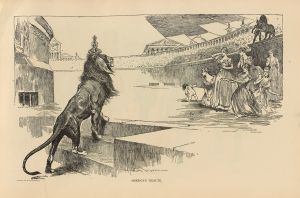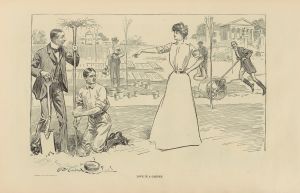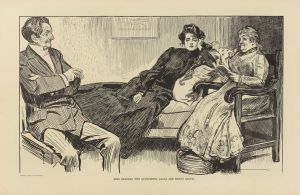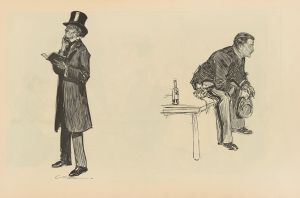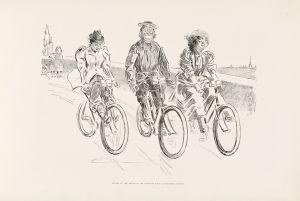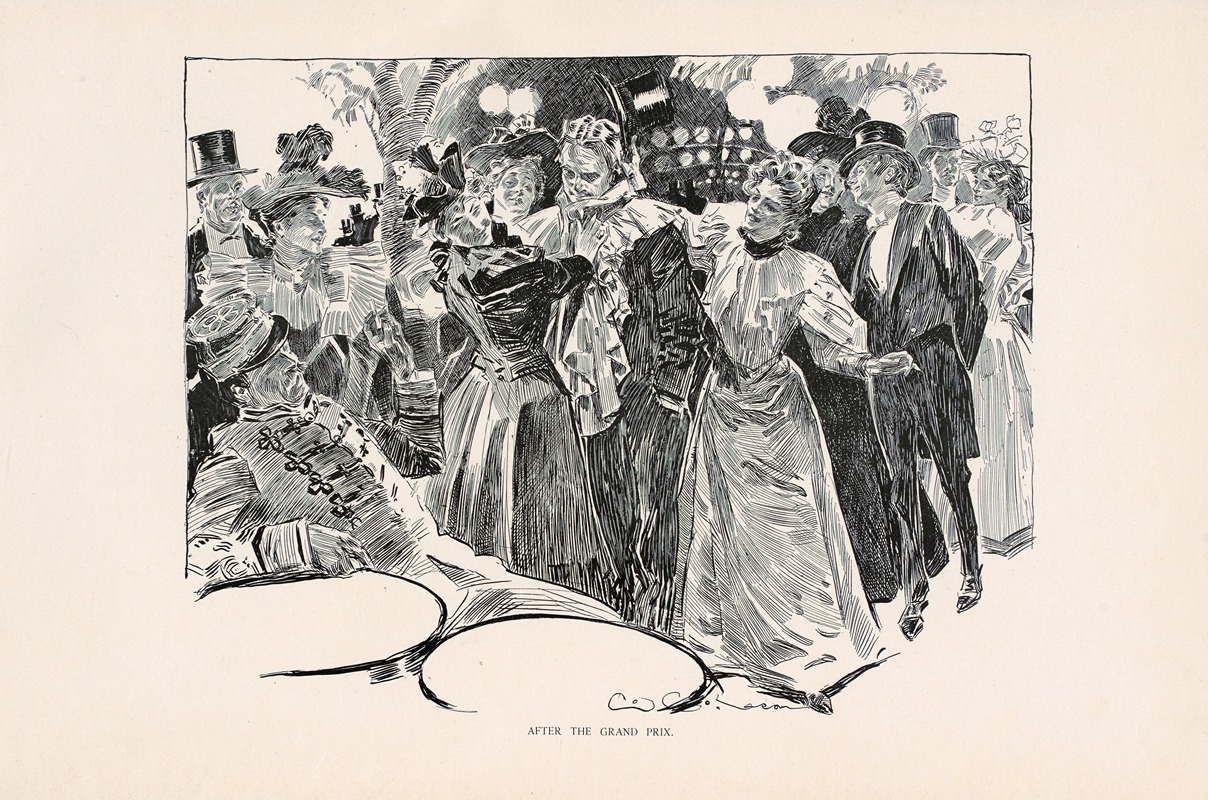
After the Grand Prix
A hand-painted replica of Charles Dana Gibson’s masterpiece After the Grand Prix, meticulously crafted by professional artists to capture the true essence of the original. Each piece is created with museum-quality canvas and rare mineral pigments, carefully painted by experienced artists with delicate brushstrokes and rich, layered colors to perfectly recreate the texture of the original artwork. Unlike machine-printed reproductions, this hand-painted version brings the painting to life, infused with the artist’s emotions and skill in every stroke. Whether for personal collection or home decoration, it instantly elevates the artistic atmosphere of any space.
"After the Grand Prix" is an illustration by the renowned American artist Charles Dana Gibson, who is best known for creating the iconic "Gibson Girl" images that epitomized the idealized American woman of the late 19th and early 20th centuries. Gibson's work was widely published in magazines and became a significant part of American popular culture during that era.
Charles Dana Gibson was born on September 14, 1867, in Roxbury, Massachusetts. He studied at the Art Students League in New York City and began his career as an illustrator in the late 1880s. His work quickly gained popularity, and he became one of the most celebrated illustrators of his time. The "Gibson Girl" became a cultural phenomenon, representing a new standard of femininity and independence for women.
"After the Grand Prix" is one of Gibson's many illustrations that capture the social scenes and fashionable lifestyles of the upper class during the late 19th and early 20th centuries. The Grand Prix, a prestigious horse racing event, was a popular social gathering for the elite, and Gibson's illustration likely depicts the aftermath of such an event, focusing on the interactions and attire of the attendees.
Gibson's style is characterized by its detailed line work and the ability to convey personality and emotion through facial expressions and body language. His illustrations often included satirical elements, subtly critiquing the social norms and behaviors of the time. "After the Grand Prix" would have been no exception, offering a glimpse into the leisurely pursuits and social dynamics of the era's affluent society.
The illustration was likely published in one of the popular magazines of the time, such as "Life," "Harper's Weekly," or "Collier's," where Gibson's work frequently appeared. These publications were instrumental in disseminating his images to a broad audience, solidifying his influence on American visual culture.
Gibson's work, including "After the Grand Prix," played a significant role in shaping the public's perception of the social elite and the evolving roles of women in society. His illustrations not only entertained but also provided commentary on the changing social landscape of the United States during a period of significant transformation.
Charles Dana Gibson continued to produce illustrations until his retirement in the 1930s. He passed away on December 23, 1944, leaving behind a legacy that continues to be studied and appreciated for its artistic merit and cultural impact. His work remains a valuable resource for understanding the social history and visual culture of his time.





